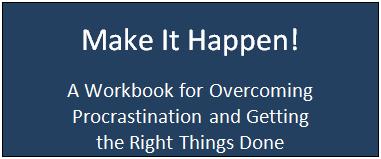 There are less than six months left of this year. How are you doing with the goals that you set for yourself on the first day of January? Did you stop smoking? Did you lose those twenty pounds? Have you paid off any of your debts?
There are less than six months left of this year. How are you doing with the goals that you set for yourself on the first day of January? Did you stop smoking? Did you lose those twenty pounds? Have you paid off any of your debts?
Chances are that you got off to a great start with your New Year’s resolutions. But then you slipped. And when you fell off the wagon you told yourself, “What’s the use? It’s only the third week of January and I’ve already messed up. I can’t do this. I have absolutely no willpower. Why did I even think that I could change?” At that point you gave up on trying to achieve the goals that you had set for yourself.
However, psychologists hold that relapsing when you’re trying to achieve a goal–overeating when you’re dieting, having a cigarette when you’re trying to quit smoking, oversleeping when you’re trying to become an early riser, and so on–is simply a part of the change process. In addition, if you slip when you’re trying to achieve one of your goals, the best thing that you can do is to forgive yourself and keep moving forward.
In this post you’ll discover how to continue moving toward your goals even if you momentarily revert to your old, unwanted behavior. We’ll get started by taking a look at “The Stages of Change Model”, and then we’ll take a look at the relapse stage of the process. Lastly, you’ll discover a ten-step process to follow when you slip up.
The Stages of Change Model
 Psychologists have identified the process people go through when making changes in their life; they’ve named the process “The Stages of Change Model”. This model was introduced in the late 1970’s by researchers James Prochaska, Ph.D., and Carlo DiClemente, Ph.D., who were studying ways to help people quit smoking. It consists of the following five stages:
Psychologists have identified the process people go through when making changes in their life; they’ve named the process “The Stages of Change Model”. This model was introduced in the late 1970’s by researchers James Prochaska, Ph.D., and Carlo DiClemente, Ph.D., who were studying ways to help people quit smoking. It consists of the following five stages:
1. Precontemplation: At this stage the person isn’t even considering changing their behavior.
As an illustration, suppose that you lead a sedentary lifestyle and you get very little physical exercise. However, you have no intention of starting an exercise program. You think that exercising is overrated and you’re just too busy doing other things.
2. Contemplation: The person begins to think that the behavior that they’re engaging in is problematic, or they think of a new behavior that they would like to adopt, and they start weighing the pros and cons of changing.
To continue with our previous illustration, at this stage you begin to realize that your lack of physical exercise is a problem. Your energy level is low, you’re not sleeping well at night, and you’re really starting to pack on the pounds. You start weighing the pros and cons of starting an exercise program.
3. Preparation: The person has made the decision to make a change, and has started to get ready to change by doing things such as planning what to do and gathering information. This stage combines intention with behavior.
If we continue with our example, you’ve made the decision to start exercising and you’ve taken some preparatory steps. You’ve sat down and written some exercise goals, you’ve started thinking of how you can achieve those goals, you’ve read a few articles on how to incorporate exercise into your daily life, and you’ve bought exercise clothes.
4. Action: The person is taking consistent action to make a change in their life.
Once again to continue with our illustration, you’ve started taking a daily half-hour walk after dinner. After the first two weeks you’re sleeping better and you feel more energized. After four weeks you start to notice that your clothes aren’t so tight anymore. These positive changes encourage you to keep going.
5. Maintenance: The person is working to prevent relapse; this stage can last indefinitely.
To wrap up our illustration, walking every day after dinner is now a regular habit for you. However, you have to make sure to make it a life-long habit.
The Relapse Stage of the Change Process
Relapse is not a separate stage of the change process. Instead, it’s something that can happen at any moment:
- You may be contemplating making a change, but then you get the flu and are sick in bed for a few days and you stop thinking about taking up an exercise program.
- You may have written down some exercise goals and started planning how you’re going to achieve those goals, but then your boss gives you an important assignment at work and you forget about exercising for the time being.
- Perhaps you’ve been walking every evening for a couple of weeks, but then your best friend from college comes to town and you miss a week.
- It’s now late November and you’ve been walking every day on a consistent basis since January. Exercising has become a regular habit for you; you’re glad that you set the goal of getting daily physical exercise and that you followed through on it. However, the Christmas season begins, you have lots of parties to attend and tons of preparations to take care of at home, and you stop exercising. By December 31st, three weeks have gone by since the last time you exercised.
If, or when, you do relapse, simply follow this ten-step process:
- Accept that you slipped up and forgive yourself. Beating yourself up for the relapse is counterproductive and is likely to lead to the abandonment of your goal.
- Recognize that relapsing is simply part of the change process and don’t allow setbacks to undermine your self-confidence. Acknowledge that you may have to “recycle” through “The Stages of Change Model” several times before the change becomes truly permanent.
- Take a hard look at what happened. Identify what triggered the relapse.
- Create a plan to avoid these triggers in the future. How will you deal with any future temptations?
- Ask yourself if you can foresee any further obstacles to your success.
- Take steps to overcome any future obstacles you may come across.
- Reassess your resources and the techniques that you’re using to achieve your goal. Do you need to make any changes to your plan on how you’re going to achieve your goal?
- Make any necessary changes to your goal-achievement plan.
- Reaffirm your motivation and make a re-commitment to achieve your goal.
- Get back on track.
Conclusion
The bottom line is that when you’re trying to make a positive change in your life, it’s highly likely that you’ll slip up. Relapses are almost inevitable; recognize this from the very start. When you do relapse, stop telling yourself that you’ve failed and that you won’t be able to achieve your goal. Instead, forgive yourself and get back up on the horse.
If you’re ready to make an important change in your life and you’re looking for a system you can follow that will take you by the hand and guide you step-by-step through the entire process of setting important life goals and following through on those goals, get “How to Live Your Best Life – The Essential Guide for Creating and Achieving Your Life List”.

Related Posts:
1. 18 Powerful Tips for Overcoming Procrastination
2. Strengthening Your Willpower: Four Ways to Listen to the Angel on Your Shoulder
3. Stop Procrastinating Tip: Practice Discomfort
4. The One-Hour-A-Day Formula
I Recommend:
1. How to Live Your Best Life – The Essential Guide for Creating and Achieving Your Life List
2. Make It Happen! A Workbook for Overcoming Procrastination and Getting the Right Things Done
3. How to Be More Creative – A Handbook for Alchemists
4. The One-Hour-A-Day Formula: How to Achieve Your Life Goals in Just One Hour a Day
Did you enjoy this article? Subscribe to “Daring to Live Fully” by clicking here and get free updates.

 Marelisa Fabrega is a lawyer and entrepreneur. She holds a Bachelor of Science in Business Administration from Georgetown University in Washington, D.C., as well as a Juris Doctor from the Georgetown University Law Center. You can learn more about her
Marelisa Fabrega is a lawyer and entrepreneur. She holds a Bachelor of Science in Business Administration from Georgetown University in Washington, D.C., as well as a Juris Doctor from the Georgetown University Law Center. You can learn more about her 






Comments on this entry are closed.
Hi Mrelisa. Great article as usual. This is by far my favorite blog. :o)
But would it be possible to start putting the entire article back in emails instead of just the beginning and a link?I forward them to people who I think might like them and I think they’re much more likely to read the whole article than follow the link (I know I am, if someone sends me something to read).
Thanks! Just a thought…